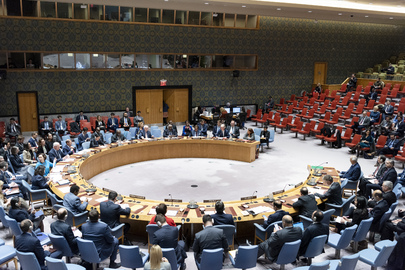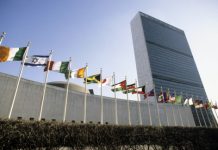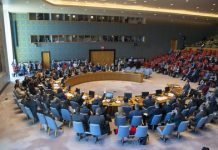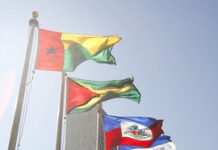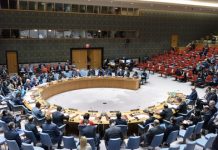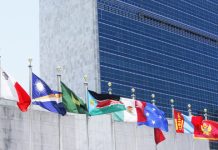This comes a day after Israel once again ordered the evacuation of large areas within Gaza, citing rocket fire into its territory.
The new orders cover about three square kilometres in North Gaza and Deir Al-Balah governorates, according to initial analysis by OCHA.
Deadly airstrikes
Strikes have since been reported in Al Mawasi area, where people had been ordered to move and take shelter.
The UN Children’s Fund (UNICEF) wrote on social media that five youngsters were reportedly killed on Wednesday night, and others injured, in a strike on a tent in Mawasi – a so-called “safe zone”.
Aid operations hindered
OCHA recalled that currently over 80 per cent of the Gaza Strip is under unrevoked Israeli evacuation orders.
Amid this situation, the ability of humanitarians to support people in need across Gaza is further diminishing, the agency warned.
“December saw some of the toughest restrictions on humanitarian movement ever recorded. This includes blocking access to border areas for collecting supplies and denying attempts to deliver goods and services or assess needs across Gaza,” OCHA said.
Overall, Israel denied 39 per cent of UN attempts to move aid workers anywhere in Gaza, with another 18 per cent disrupted on the ground or hindered.
Additionally, for besieged areas in North Gaza, access has been denied for 88 consecutive days, or since 6 October.
West Bank assessment
Meanwhile in the West Bank, humanitarians have carried out an assessment in the aftermath of the Israeli forces’ operation in Tulkarm and Nur Shams refugee camps on 24 and 25 December.
The exercise was conducted by OCHA, alongside UN Palestine refugee agency, UNRWA, and aid partners.
Teams visited the area on Tuesday and estimate that over 1,000 housing units and about 100 shops were damaged from explosions or bulldozing.
Furthermore, over 20 families comprising more than 90 people were displaced, while damage to infrastructure disrupted electricity, water and sewage networks.
In response, OCHA has mobilized humanitarian action by partners, who are already trucking water to those in need.
The assessment will serve to inform further interventions, including the installation of new water tanks, the vacuuming of sewage and the distribution of hygiene kits and emergency cash.
A patient is taken into Egypt from Gaza through the Rafah border crossing in 2023.
Step up evacuations: WHO
Also on Thursday, the Director-General of the World Health Organization (WHO) once again raised the alarm over the need for urgent medical evacuations from Gaza, noting that the pace remains excruciatingly slow.
Only 5,383 patients have been evacuated with support from WHO since October 2023, of which only 436 since the Rafah crossing was closed, Tedros Adhanom Ghebreyesus said in a statement posted on social media.
He said over 12,000 people still need medical evacuation.
“At this rate, it would take 5-10 years to evacuate all these critically ill patients, including thousands of children. In the meantime, their conditions get worse and some die,” he warned.
He reported that 55 patients and 72 companions were evacuated to the United Arab Emirates (UAE) on 31 December.
Source of original article: United Nations (news.un.org). Photo credit: UN. The content of this article does not necessarily reflect the views or opinion of Global Diaspora News (www.GlobalDiasporaNews.com).
To submit your press release: (https://www.GlobalDiasporaNews.com/pr).
To advertise on Global Diaspora News: (www.GlobalDiasporaNews.com/ads).
Sign up to Global Diaspora News newsletter (https://www.GlobalDiasporaNews.com/newsletter/) to start receiving updates and opportunities directly in your email inbox for free.


